Variations: Caramel Sponge Cake Frosted with Caramel Italian Meringue Buttercream; Chocolate Sponge Cake; Glazed Mango Mousse Cake; Orange Glazed Sponge Cake; Princess Cream Cake
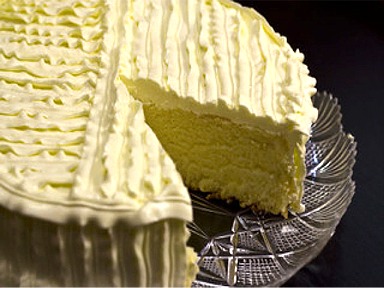
Cake and photo by odetteganda, Premium Member © Sarah Phillips
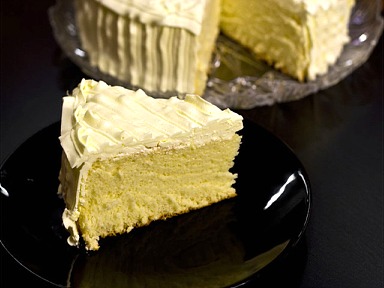
Cake and photo by odetteganda, Premium Member © Sarah Phillips
This was my mother Priscilla's all-purpose party cake, handed down from my grandmother. The texture and flavor of this sponge cake is delightful and delicate and goes well with a fresh fruit salad of orange and grapefruit segments and some whipped cream. Once cooled, cut it with a serrated knife; otherwise you'll squash it! For Christmas, this would be beautiful presented along with Candied Citrus Peel on the platter or served with my Hot Fudge Sauce Cake Topping Recipe drizzled on each slice! Odette frosted the cake with our silky smooth Neoclassic French Buttercream, orange variation, recipe below!
CAKE RECIPE HELP
Odetteganda, Premium Member, Says: “Hi Sarah, I made your mom's recipe of Orange Sponge Cake and it was so good! It is the fluffiest and softest cake that I've ever made, and by far is my best cake crumb!
Once the cake is cooled, I decorated it with simple pipes of the buttercream. After a few photos, I cut the cake and the texture was very fine. This is the fluffiest cake that I've ever made. The texture was so fine and soft, it's like made with a mix! And, the color was perfect light yellow.I'm so happy with how the cake turned out, it's so delicious because of the orange flavor that it imparts with every bite. The recipe itself was a classic, and even if it is just my first time baking a real sponge cake, it was successful. I love this cake, now definitely one of my staples.”
STEP I: MAKE PRISCILLA'S ORANGE SPONGE CAKE
PRISCILLA'S ORANGE SPONGE CAKE
INGREDIENTS
1 cup bleached cake flour (not self-rising); spoon into dry measuring cup and level to rim
1/2 teaspoon salt
5 large eggs, separated; separate when cold. Can use cold in the recipe.
1 cup sugar or superfine sugar, divided
1/4 fluid cup plus 1 tablespoon orange juice or water
1 teaspoon vanilla extract
1 teaspoon orange extract or 1 tablespoon orange peel, finely chopped (from 1 large orange)
1 teaspoon cream of tartar or 1 teaspoon lemon juice
INSTRUCTIONS
Preheat the oven, prepare the pan and sift the cake flour:
1. Position a rack in the center of the oven and preheat the oven to 325 degrees F.
2. Grease only the bottom of a 9-inch springform or cake pan, line with parchment paper and grease the paper. Make sure you do not grease the side. (This type of cake is easier to remove from a two-part pan). Set aside.
SARAH SAYS: Preferably, do NOT use a NON STICK pan.
SARAH SAYS: To fit a piece of parchment paper to its pan, trace the outline of the pan on a piece of parchment paper. Cut out the circle, and place it pen or pencil side down in the pan.
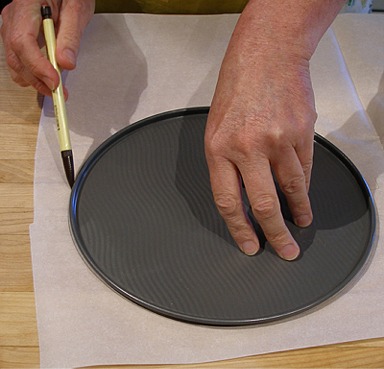
Lightly spray the bottom of the springform pan.
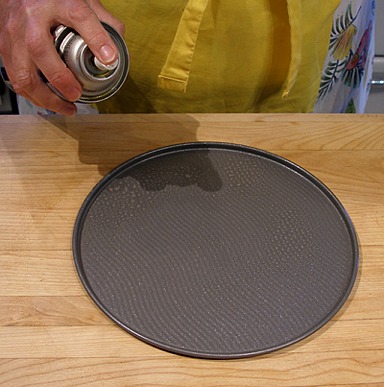
Fit the cut-put parchment round to the bottom of the greased springform pan bottom, and lightly spray with oil, again.
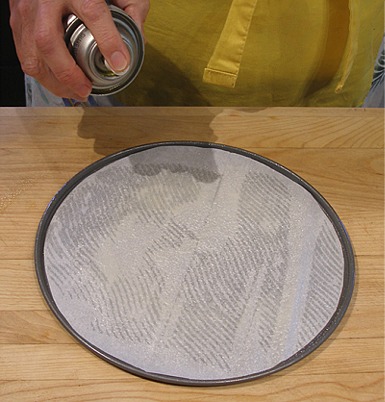
Clamp on the springform pan's sides. Make sure you do not grease the sides. Set aside.
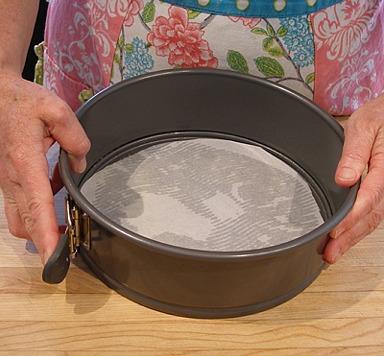
3. Sift the cake flour with the salt, after measuring, 3 times into a small bowl or onto a large piece of parchment or waxed paper.
Set aside.
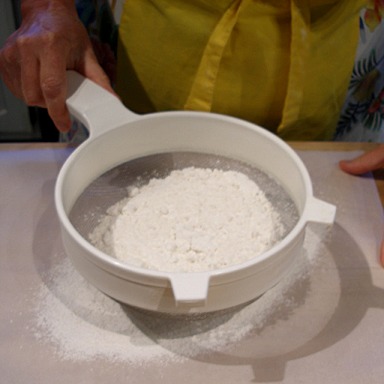
Beat and ribbon the egg yolks:
1. In a mixer bowl of a stand mixer, whisk the egg yolks to break them up.
SARAH SAYS: Instead of by hand, clamp the mixer bowl onto a stand mixer and add the egg yolks. Fit the mixer with the whisk attachment, and mix the egg yolks on low until combined.
You must use the whisk attachment, not the paddle attachment; the paddle works only when only ribboning egg yolks with sugar, but not with other added ingredients.
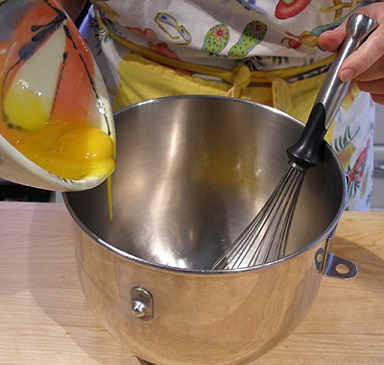
2. Then, add 1/2 cup of the sugar, orange juice, and vanilla and orange extracts (or zest).
SARAH SAYS: Instead of by hand, stop the mixer, and add the ingredients.
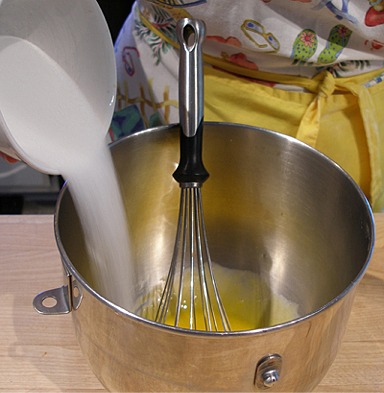
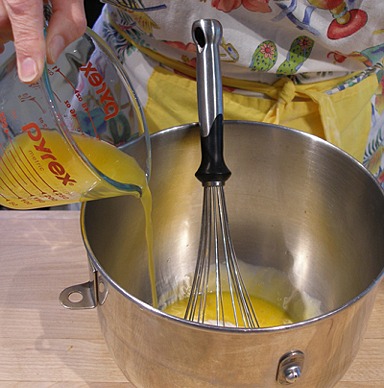
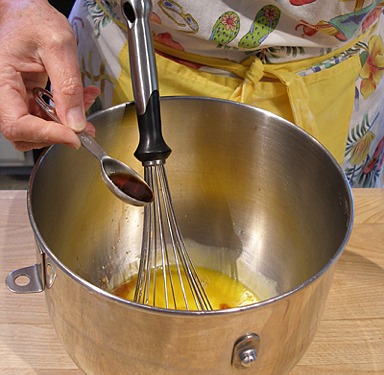
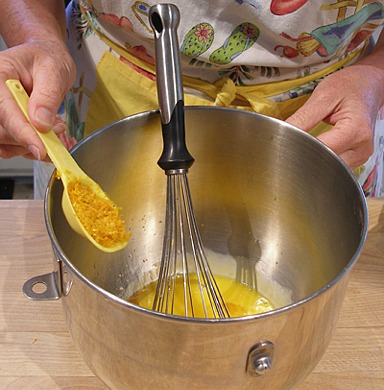
3. Start with your mixer on medium-low, gradually increasing its speed to high.
Stop when the egg yolk mixture is light in color, taking about 4-5 minutes
When you stop the mixer and lift the whisk attachment, the mixture should fall in a ribbon pattern that sits on top of the swirl for seconds before sinking.
SARAH SAYS: That's why it's called ribbon the egg yolks or ribboning!
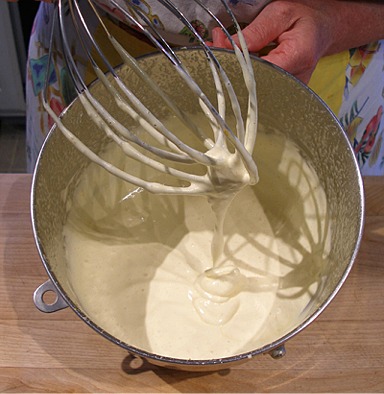
Fold the flour into the ribboned egg yolks:
1. Sprinkle the half of the flour over the ribboned egg yolks and gently whisk it in to make a smooth batter; don't beat in a mixer.
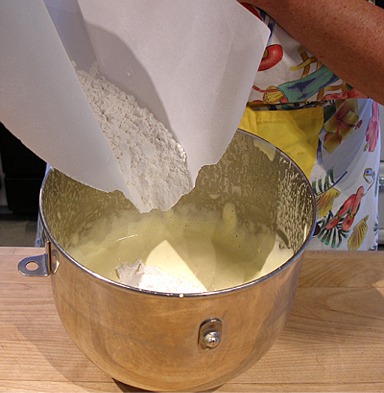
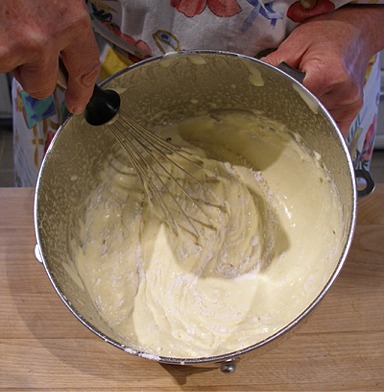
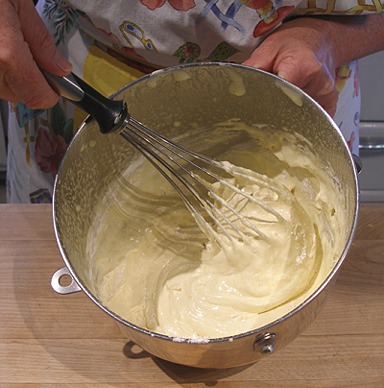
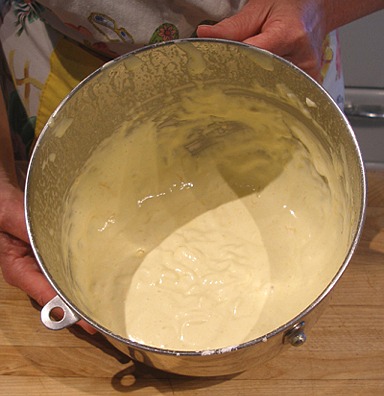
2. Repeat with the other half of the flour.
3. Cover and set aside.
Beat the egg whites:
1. In the dry, clean bowl of a stand mixer, fitted with a whisk attachment, beat the egg whites until foamy with the mixer on medium-low speed.
Add the cream of tartar. Continue whipping until the foam is white and opaque.
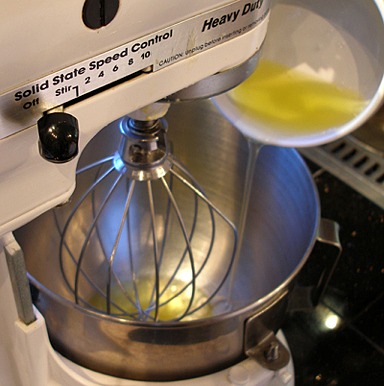
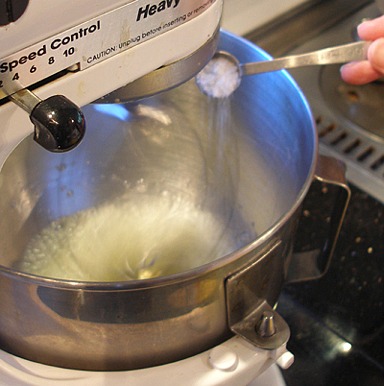
2. Increase the mixer speed to high and add the remaining 1/2 cup of sugar at the side of the bowl. Beat until the egg white foam is light and fluffy.
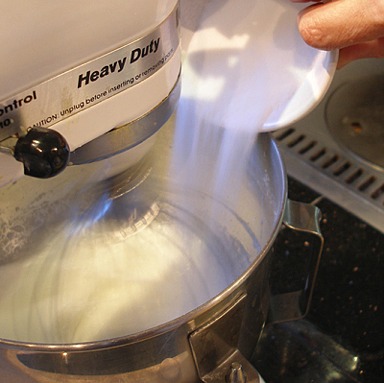
3. When you stop the mixer and lift its beaters, the whites should form a soft peak and then have its tip droop and fold over.
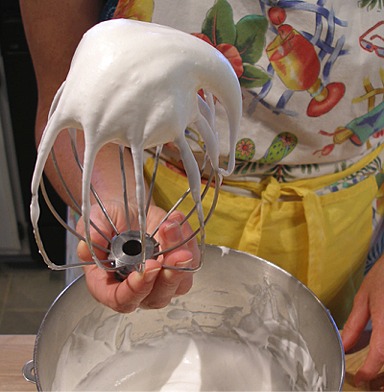
Fold the mixtures together:
1. Add a small amount of the beaten whites to the egg yolk batter and stir with your whisk to lighten.
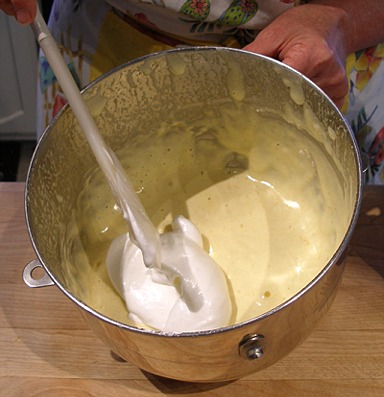
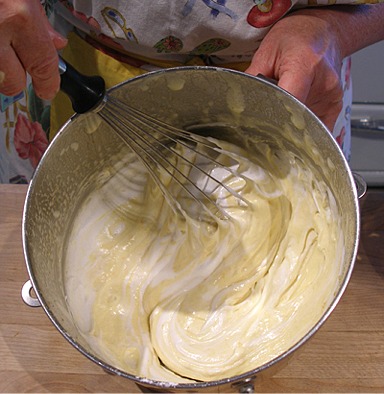
2. Place the rest of the beaten egg whites on the surface of the batter.
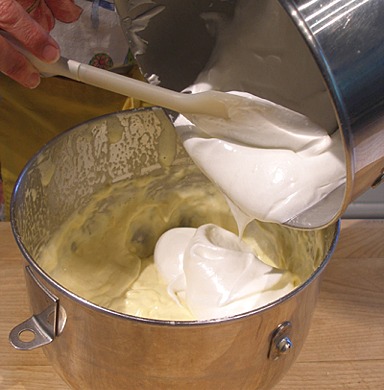
3. With a large rubber spatula, fold very carefully so the whites don't lose their volume. Take your time!
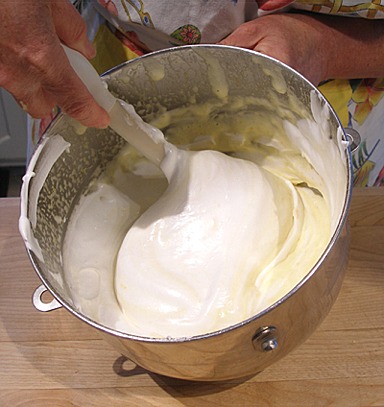
The batter should be homogenous.
Bake:
1. Scrape the batter into the prepared pan. Lightly smooth its top.
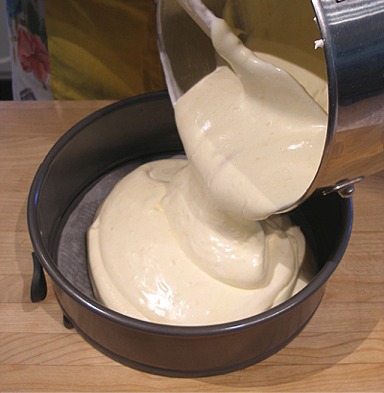
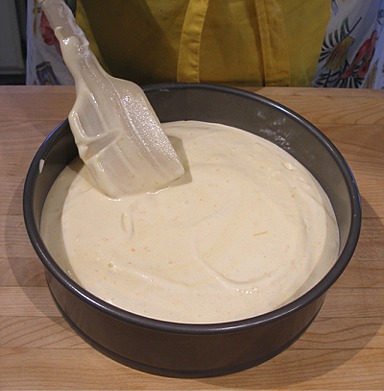
2. Bake the cake for 40 minutes or until the cake is well risen, firm, and sounds hollow when tapped on the pan with the handle of a wooden spoon.
It should also be golden brown on top. It will not shrink from the side of the pan. The cake will form a slight dome.
Cool the cake in its pan on a wire cake rack for ten minutes.
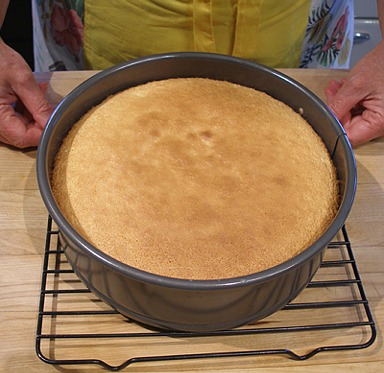
3. To remove the cake from its pan:
Slip a flexible metal spatula carefully down the side of the pan.
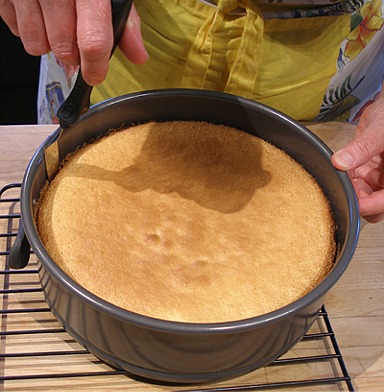
Slowly trace around the perimeter, unlatch the clamp and slip off the pan side.
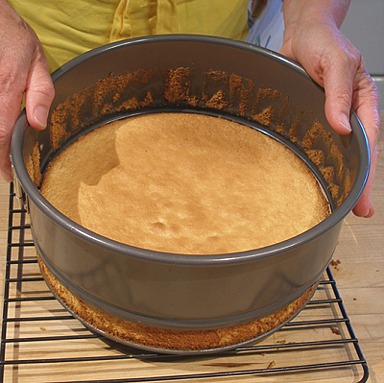
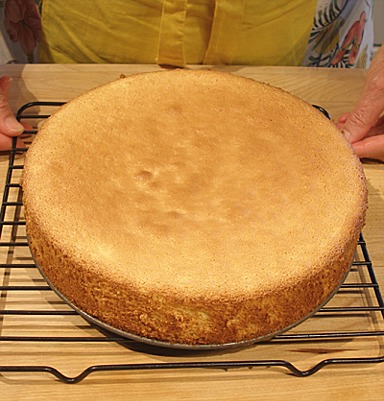
When the side is free, turn it over on a plate, slip a flexible metal spatula between the cake and the pan's bottom to loosen, and remove.
Gently peel off the parchment paper.
4. Set the cake on a wire cake rack to cool.
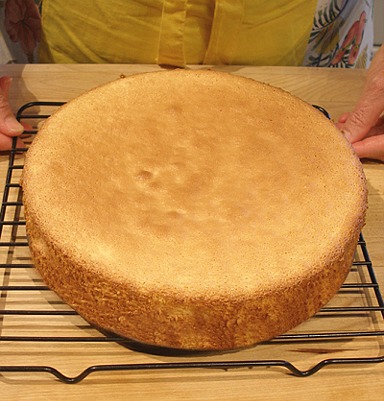
STORAGE
If you want to keep your unfrosted cake, freeze it wrapped first in plastic wrap, then in foil, and finally in an airtight container. It will keep for 2 to 3 months.
STEP II: MAKE THE ORANGE NEOCLASSIC FRENCH BUTTERCREAM
ORANGE NEOCLASSIC FRENCH BUTTERCREAM / Recipe alone
Makes 4 cups or enough to frost two, 9 x 2-inch layers or three, 9- x 1-inch layers
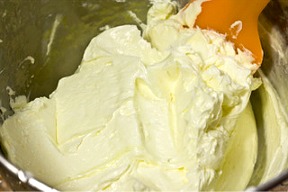
Buttercream and photo by odetteganda, Premium Member © Sarah PhillipsCraftyBaking.com
This buttercream has a rich flavor, a richly ivory color and is silken smooth and not too sweet. The recipe is not as fluffy and much softer than egg white-based buttercreams, such as the Italian Meringue Buttercream Recipe (IMBC); IMBC which is better to use when piping decorations. The egg yolks are not cooked in the recipe, and the sugar syrup added is not hot enough to cook them. You may want to use pasteurized powdered egg yolks if you are concerned. Once the sugar syrup reaches a full boil (238 degrees F), it's ready to use. The corn syrup in the recipe helps prevent crystallization.
INGREDIENTS
6 large (4 ounces; 112 grams) egg yolks (can use pasteurized, but fresh work better)
3/4 cup (5.25 ounces; 150 grams) sugar
1/2 cup (5.75 ounces; 164 grams) corn syrup
2 cups (1 pound; 454 grams) unsalted butter, softened
2 tablespoons (1 ounce; 28 grams) vanilla extract or eau-de-vie of your choice (optional)
1 teaspoon (13.5 grams) Tang dissolved in 1/3 cup orange flower water or 1 teaspoon orange extract, 1 tablespoon (18 grams) grated orange zest (peel), and 2 tablespoons Grand Marnier.
INSTRUCTIONS
1. Grease a 1 cup heatproof glass measure and place near the stove.
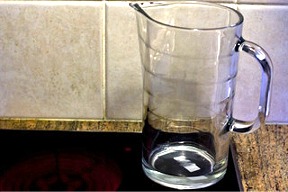
2. In the mixing bowl of a stand mixer, and beat the yolks with the whisk attachment, until light in color and fluffy.
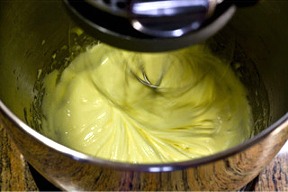
Meanwhile, combine the sugar and corn syrup in a small heavy-bottomed saucepan and heat, stirring constantly, until the sugar dissolves and the syrup comes to a rolling boil and its entire surface is covered in tiny bubbles. (The syrup must come to a rolling boil or the resulting buttercream will be too thin.)
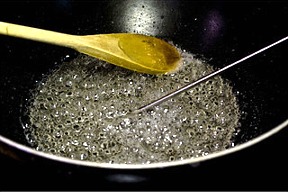
Remove the pot from the heat and immediately transfer the syrup to the glass measure to stop the cooking. Do not scrape the bottom of the pan to get the remaining sugar syrup from it into the glass measuring cup.
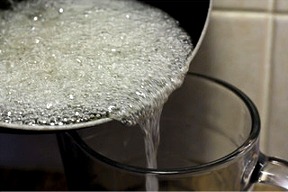
3. Pour a small amount of syrup over the yolks, and immediately beat at high speed for 5 seconds. Stop the mixer and add a larger amount of syrup. Beat at high speed for 5 seconds. Continue with the remaining syrup. For the last addition, use a rubber scraper to remove the syrup clinging to the glass measure. Continue beating until completely cool.
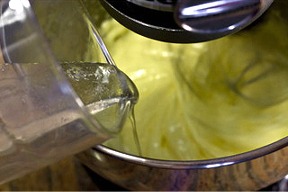
NOTE: Using a hand-held beater makes this easier. If using, beat the syrup into the yolks in a steady stream. Don't allow syrup to fall on the beaters or they will spin it onto the sides of a bowl and will harden.
4. Fit the stand mixer with a paddle attachment, so too much air isn't beaten into the mixture.
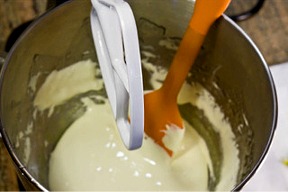
Gradually beat in the butter, 1 to 2 tablespoons at a time. The egg/syrup mixture must be completely cool before adding the butter. The buttercream will begin to thicken once all of the butter has been added.
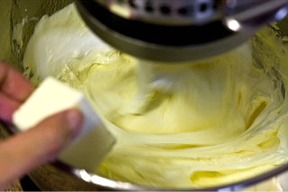
SARAH SAYS: If the butter is too cold (the mixer bowl will feel cold, as a result), sometimes the mixture will curdle. To fix, stop adding butter, soak a dish towel in hot water, wring it out and wrap it around the bowl while increasing beater speed to high. The gentle warming of the mixture plus the additional mixing will bring it back into a smooth mixture (emulsion). Or, beat the frosting on low speed, and it will bring it back together. When the icing does come together, resume with adding butter. If the bowl still feels hot, and/or the butter melts when you start to add it, stop adding butter and continue to beat on medium until the bowl cools down.
Add the Tang dissolved in orange flower water or orange extract, grated orange zest and Grand Marnier and beat to combine.
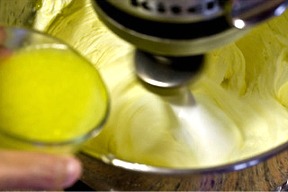
The final buttercream.

STORAGE
Place in an airtight bowl and keep refrigerated. Keeps 1 week refrigerated; 8 months frozen. Bring to room temperature before using and/or rebeating to restore texture, if necessary, to prevent curdling.
STEP III: ASSEMBLE AND DECORATE THE CAKE by odetteganda, Premium Member
1. When the cake has cooled and been unmolded, place a dab of buttercream in the center of a round cardboard cake round and gently press the cake into position, top side up. Apply a thin crumb coat of buttercream.
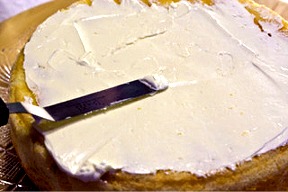
Chill for 10 minutes to let the buttercream set.
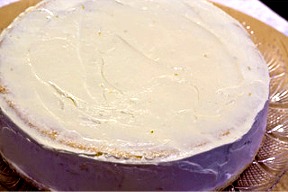
2. Decorate the cake:
Fit a pastry bag with a leaf-tip, such as Wilton's tip #69 or #114 to pipe decorations. Fill a pastry bag with buttercream and pipe on the sides from bottom up.
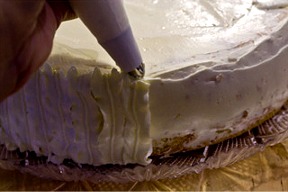
Then pipe the top with perpendicular lines.
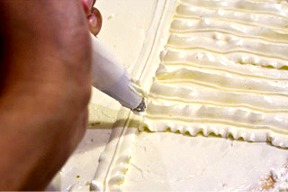
The final cake.
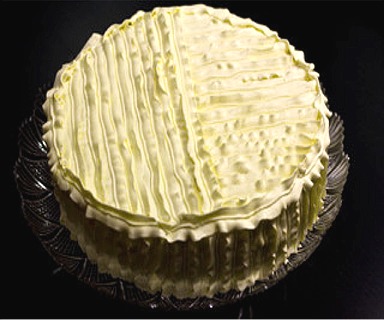
SERVE
To serve, cut thin slices with a sharp serrated knife.

STORAGE
Store the frosted cake in the refrigerator under an inverted glass bowl or cake keeper for a couple of days.
VARIATIONS
Caramel Sponge Cake Frosted with Caramel Italian Meringue Buttercream
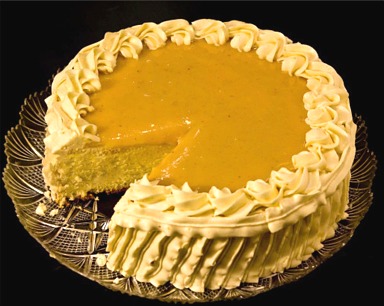
FROSTING
CARAMEL (by odetteganda): I used the vanilla mousseline buttercream (IMBC), added 1/2 cup of the caramel syrup* in the frosting after all the butter had been added.
*SYRUP NOTES: The caramel syrup is made of a can of this Dulce de Leche Syrup recipe but has only been in the oven for 1-hour to 1 1/2 hours so that it will still be pourable. Can use jarred Dulce de Leche Syrup.
Orange Glazed Sponge Cake: Omit the French Buttercream.
ORANGE GLAZE by Sarah Phillips
INGREDIENTS
1 1/2 cups powdered sugar, sifted; sift after measuring
1/4 cup orange juice or water
1 tablespoon grated orange peel (from 1 large orange)
INSTRUCTIONS
Make the Orange Glaze:
Beat together the powdered sugar, orange juice and orange peel/ Add more juice, 1 teaspoon at a time if the glaze is not pourable, or add powdered sugar 1 tablespoon at a time to stiffen.
ASSEMBLY
When the cake has cooled, and been unmolded, place it on a wire cake rack set over a piece of waxed or parchment paper set on a rimmed cookie sheet or pan. Pour the glaze over the top. Let the icing set 10 to 15 minutes, and serve.
SERVE
To serve, cut thin slices with a sharp serrated knife and serve with fruit salad or ice cream and berries.
STORAGE
Store the glazed cake at room temperature under an inverted glass bowl or cake keeper for a couple of days.
VARIATIONS
Chocolate Sponge Cake
The Priscilla's Orange Sponge Cake is used with the Glazed Mango Mousse Cake
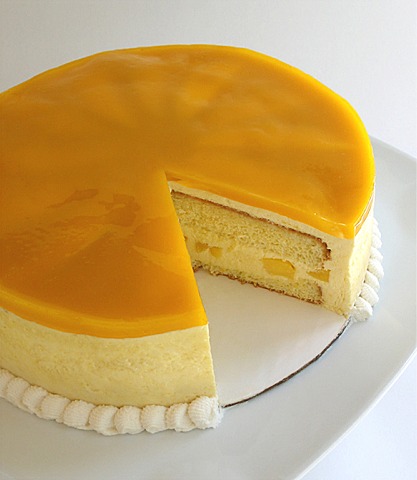
Food styling and photo by Kelly Hong © Sarah Phillips
This cake recipe is doubled and used to make the Princess Cream Cake.
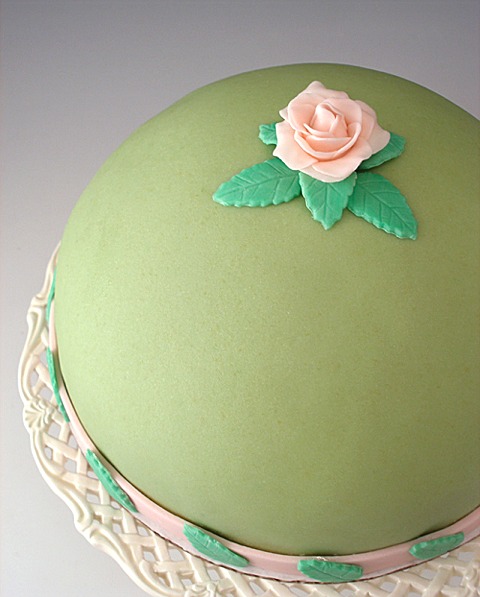
Princess cake food styling and photos by Kelly Hong © Sarah Phillips
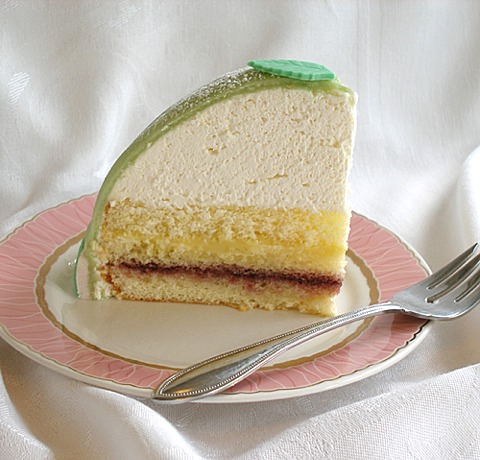
Princess cake food styling and photos by Kelly Hong © Sarah Phillips


